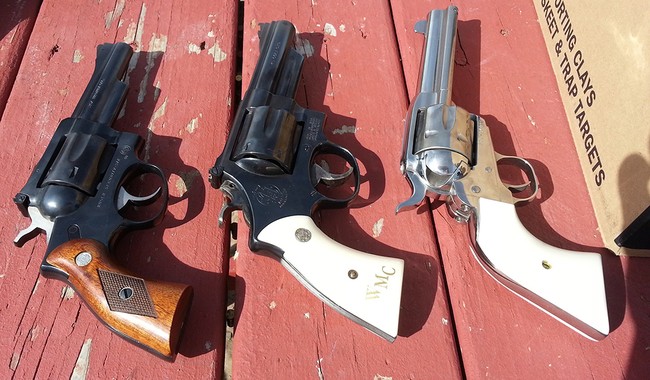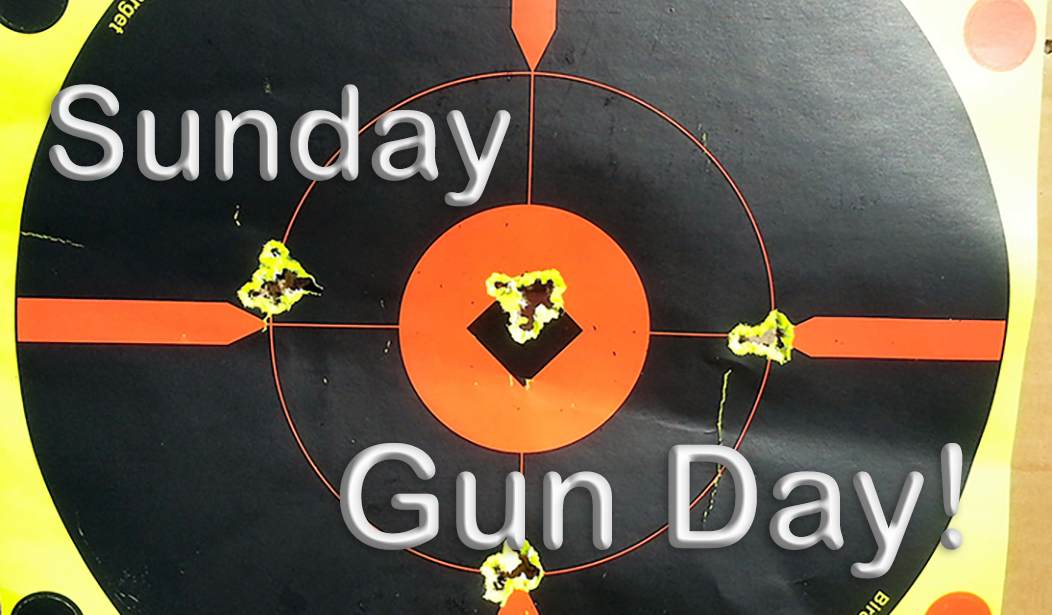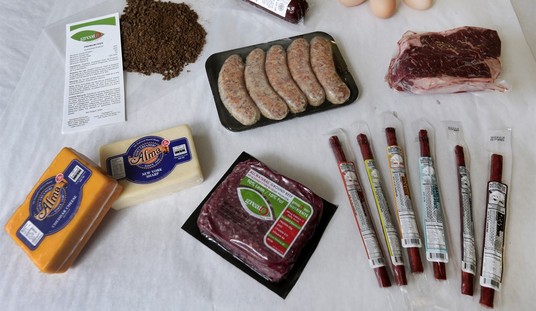The Perfect Double-Action Revolver
Resolved: The Smith & Wesson .44 Hand Ejector 1st Model “New Century,” otherwise known as the “Triple Lock,” is the standard by which all double-action revolvers must be judged. Now that that’s established, let’s take a closer look at this scion of modern double-action six-guns, how it came to be, who used it, who made it famous, how it changed the way shooters looked at six-guns and what they expected from them; and not least, let’s take a closer look at why it remains today perhaps the most significant double-action revolver ever made.
The Forerunners
First, we must cast our optics back to the year 1889. During and since the War of the Northern Aggression, the folks at Colt had dominated the military sidearm market, leaving Smith & Wesson to survive off the civilian trade. Their offerings were all variations of a kind, top-break revolvers that were fast to reload but had a significant weakness in their hinged frames.
But in 1889, Colt introduced something new. This was the Colt Model 1889, the first production double-action revolver with a solid frame and a swing-out cylinder. Colt quickly followed this up with the M1892 Army and Navy and the excellent, big, tough Colt New Service, which was available in heavy revolver rounds like the .44WCF and .45 Colt.
Smith & Wesson, still then located in Springfield, Massachusetts, rose to the challenge, but their first swing-out double-action was a pipsqueak; in 1896, they introduced the .32 Hand Ejector in .32 Long, and in 1905, they followed up with the 1905 Hand Ejector in .38 Special. This last gun was to give rise to the K-frame revolvers and the near-immortal Model 10, but that’s not the gun we’re here to discuss.
It was in 1908 that Smith & Wesson hit the home run.
The New .44
It’s not often that a gun manufacturer comes up with the perfect blending of gun and cartridge. Winchester did it with the .30WCF and the M1894 lever gun. Colt and John Browning did it with the M1911 and the .45 ACP. And Smith & Wesson did it with the Triple Lock and the .44 Special.
The .44 Hand Ejector First Model’s designers did more than just scale up Smith & Wesson’s smaller .32 and .38 revolvers. The new gun retained the swing-out cylinder but added the feature that gave the gun its nickname; in addition to the lockup at the cylinder face and the end of the ejector rod, taken from the earlier Smiths, the new gun added a locking lug on the crane that locked into a recess in the frame.
This was the first of Smith & Wesson’s big-frame revolvers. This frame, which would become known as the N frame, would go on to yield such famous pieces as George Patton’s Registered Magnum and Harry Callahan’s Model 29 .44 Magnum, but the Triple Lock was the first.
This combination of three locking features – the Triple Lock – yielded a revolver that was strong enough for the new load, which was taken from the old .44 Russian case that Smith & Wesson had chambered in the break-top Schofield revolvers, and lengthened it, adding powder capacity. The first loads used 26 grains of black powder and a 246-grain round-nose lead bullet, but in these early years, hand-loaders were already experimenting. New bullets and newfangled smokeless powders were becoming available, new power levels were being achieved, and the big, tough new Smith made a perfect test bed.
The First Model guns were expensive. The Triple-Lock required a lot of careful hand-fitting and tuning to make it lock up properly and maintain cylinder timing, but when well-set up it was utterly reliable with almost any ammunition. The Triple Lock is a joy to handle; smooth, with a long but glassy double-action pull and a crisp single-action trigger. Over the years, I’ve had the opportunity to handle and shoot two .44 Special Triple Locks and I’ve been watching for the opportunity to add one to my own collection for some time.
Elmer Keith and the .44 Special
As much as any of Smith & Wesson’s marketing people, it was a Montana cowboy, hunter, guntwist, and adventurer named Elmer Keith who was responsible for the fame of the new revolver and cartridge.
Keith had cut his teeth on single-action six-guns and always remained fond of the Colt Single Action Army and the .45 Colt round, but he was also quick to see the advantages of the big new Smith and its swing-out cylinder. A committed big-bore fan, Keith liked to stoke his six-gun handloads up plenty strong, and the big-framed Smith was plenty tough enough for the hot loads he cooked up.
In his benchmark work Six-guns, Keith wrote of the Triple Lock and its cartridge:
Daniel B. Wesson, after fifty-two years of distinguished service, passed away in 1906. In 1907 Smith & Wesson brought out their Triple Lock, perhaps the finest revolver ever manufactured anywhere, at any time. Today no example of finer revolver making is to be had. The rear end of the barrel and the cylinder steel of the old triple lock are not as strong as in the present 1950 model Target S&W. .44 calibers or the .357 S&W. Magnum, but the old New Century was, and still is, one fine gun in any company.
They designed the .44 Special cartridge for this arm with 26 grains of black powder, instead of the 23 used in the .44 Russian cartridge. The .44 Special is simply a longer version of the .44 Russian and no more accurate six-gun load exists.[i]
Keith experimented extensively with heavy loads for the .44 Special in both Triple Locks and the later N-frame Smith & Wesson 1950 Target revolvers. He pressured friends at Remington and Smith & Wesson to legitimize his efforts until, in 1955, Smith & Wesson introduced an offspring of the Triple Lock that would become the Model 29. While Bill Ruger had beat Smith & Wesson to the punch by a few months, making the single-action Ruger Blackhawk the first production .44 Magnum, Smith & Wesson’s Model 29 caught on quickly, not least of which was because of Elmer Keith’s enthusiastic advocacy – and thus, the Triple Lock’s legacy lived on.
The Triple Lock itself, however, was gone by this time. The gun, as we noted, was expensive to make. In 1915, after only seven years of production, the revolver was redesigned. The Second Model did away with the third locking lug and the ejector shroud, making the gun cheaper to build and sell, and the Triple Lock production ended with a total of only 15,376 copies built.
The N Frame Revolvers
The true legacy of the Triple Lock, of course, is in its descendants, those being all the various N-frame six-guns that Smith & Wesson has produced and continues to produce to this day. The third locking lug has not been seen in a Smith & Wesson piece since the original .44 Hand Ejector 1st Model New Century, but the N-frame remains perfect for heavy six-gun loads; a big, beefy steel frame with a strong top strap, stout crane and thick sidewalls, more than capable for hot handloads in the .44 Special and .45 Colt, not to mention the .44 Magnum.
The CCW market has driven handgun producers to an ever-increasing diversity of small, light, concealable pieces, mostly semi-autos; I own a few such and favor the Glock 36 for everyday carry. But there will always be a place for a heavy holster six-gun for serious work in forest and field, and the N-frame guns are admirably suited for just that.
As I have described here before on several occasions, my favorite holster iron for outdoor work is a grandchild of the Triple Lock; mine is a 1970s-vintage Smith & Wesson 25-5 in .45 Colt, heavy but not too heavy to carry all day without complaint, and plenty tough enough for the hot .45 Colt loads I push through it. My favored load is a hard-cast 255-grain Keith-type semi-wadcutter over 8 grains of Unique, and I know from experience that this load will let daylight in both ends of a big Midwestern whitetail the long way and should handle any needs I have for a sidearm even among the big critters of Alaska. (Middle piece in the image below.)

And, yes, I do have my initials inlaid in gold on the ivory grips of this favorite revolver. If George Patton did it, it must be cool, so I adopted the idea.
The Triple Lock’s children and grandchildren are even tougher than the original, mostly due to greatly improved machining techniques and metallurgy, but the Triple Lock remains, as Mr. Keith pointed out, a fine gun in any company.
Today
The big N-frame Smith & Wessons are still being made. The big six-guns are no longer offered new in the .44 Special but, of course, the .44 Magnum is still available, which will chamber and fire .44 Special loads.
I confess, though, to being a little disappointed in the new Smith & Wesson. In 2000, Smith & Wesson added to all their revolvers an internal safety lock actuated by a key via an aperture above the cylinder lock slide; this bit of lawyerly pettifoggery has a bad reputation for failing at the wrong moment. Triggers are heavier than on older guns, although Smith & Wesson’s fit and finish remain generally good.
Happily, the various online auction and sale sites have plenty of older guns for sale. Triple Locks are scarce and command high prices, but there are enough other, less scarce N-frame guns to satisfy the collecting urges of almost any big-bore six-gunner.
The Triple Lock was a once-in-a-century sidearm – innovative, well-made, well-fitted, reliable, and tough, with a new cartridge that proved to have great potential. From its initial design descended an entire series of handguns, used by millions in forests, fields, streets, and battlefields. We haven’t seen it since, which is why the Smith & Wesson .44 Hand Ejector 1st Model “New Century” remains the standard by which all double-action revolvers must be judged.
[i] Keith, Elmer. Six-guns. Sportsman's Vintage Press. Kindle Edition.














